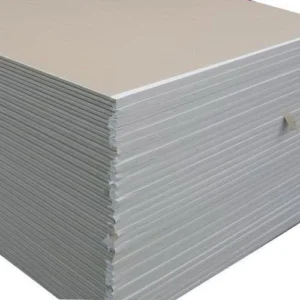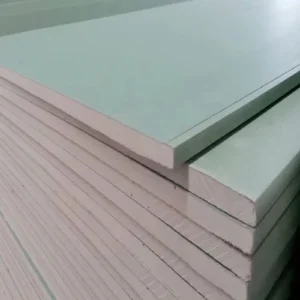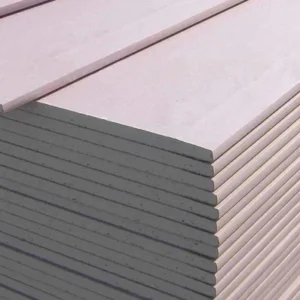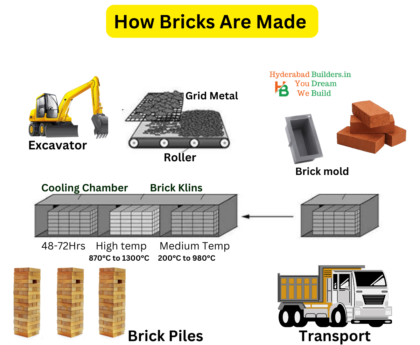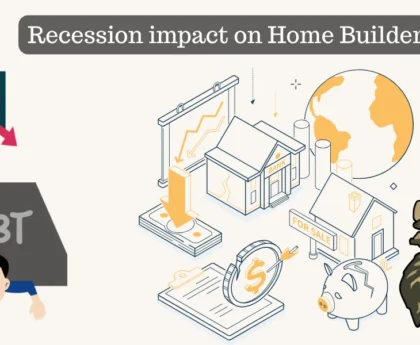Weather your constructing a new house or considering upgrading your ceiling with a false ceiling but unsure about the costs involved? Look no further! In this detailed guide, we break down everything you need to know about what is the cost to install false ceiling, from materials to design considerations and even additional electrical work. Whether you’re aiming for a budget-friendly option or a luxurious finish, we’ve got you covered.
What is False ceiling?
Table of Contents
ToggleA false ceiling, also known as a dropped ceiling or suspended ceiling, is a secondary ceiling installed below the original or true ceiling of a room. It is typically constructed using lightweight materials such as gypsum, POP, or metal framing, which are suspended from the original ceiling structure.
What are the primary purposes to install false ceiling ?
- Concealment: False ceilings are used to hide unsightly elements such as electrical wiring, air conditioning ducts, and plumbing pipes. By concealing these elements, the false ceiling creates a cleaner and more aesthetically pleasing look in the room.
- Sound Insulation: False ceilings can improve sound insulation by reducing the transmission of sound between rooms or floors. The space between the original ceiling and the false ceiling can be filled with sound-absorbing materials, such as mineral wool, to dampen noise and improve acoustics.
- Aesthetic Enhancement: False ceilings offer a versatile platform for incorporating various design elements, such as recessed lighting, decorative moldings, and architectural details. They allow for creative expression and customization, enhancing the overall visual appeal of the space.
Types of False ceiling
- POP False Ceiling:
POP (Plaster of Paris) false ceilings are a common choice for many Indian homes due to their affordability, fire resistance, and versatility in design. POP is a quick-setting plaster made of white powder that can be easily molded into various shapes and designs. It is known for its ability to conceal electrical wiring and provide a seamless look to the ceiling. The cost of a POP false ceiling typically ranges from ₹95 to ₹105 per square foot, plus an additional 18% GST. This makes POP false ceilings one of the preferred options for homeowners looking to enhance the aesthetics of their interiors without breaking the bank. - Gypsum False Ceiling:
Gypsum false ceilings are another popular option known for their fire resistance and cost-effectiveness. Gypsum boards are readily available in standard sizes and are used in conjunction with Gyproc boards and local A-grade channels to create false ceilings. While standard gypsum false ceilings, with Gyproc board and local A-grade channels, are priced at ₹75 to ₹85 per square foot, premium gypsum options, featuring premium Gyproc boards and channels, may cost between ₹90 to ₹105 per square foot, both prices excluding an additional 18% GST. It’s worth noting that gypsum false ceilings tend to be bulkier compared to other materials and are more suitable for rooms with higher ceilings. - Laminate and Veneer False Ceilings:
For homeowners seeking the aesthetic appeal of wood without the maintenance concerns, laminate and veneer false ceilings are viable alternatives. Laminate false ceilings offer a wood-like appearance and are available in various finishes. They are priced at ₹700 to ₹800 per square foot, excluding an additional 18% GST. On the other hand, veneer false ceilings provide a luxurious look with genuine wood veneer, which may require additional polishing. Veneer false ceilings typically cost between ₹900 to ₹1,200 per square foot, plus an additional 18% GST. While laminate false ceilings are more budget-friendly compared to veneer, both options offer durability and aesthetic appeal. - PVC False Ceiling:
PVC false ceilings are preferred in areas prone to moisture, such as bathrooms and balconies, due to their moisture resistance. PVC false ceilings are also available in a variety of textures, including a wood-like finish, making them a cost-effective alternative to real wood. The cost of a laminate PVC ceiling ranges from ₹160 to ₹185 per square foot, excluding an additional 18% GST. Despite their affordability and moisture resistance, PVC false ceilings lack the fire resistance of materials like POP and gypsum.
Cost to install false ceiling per sqft
The price of a false ceiling varies greatly depending on the material chosen. We outline the costs per square foot for different materials, including:
- POP (Plaster of Paris)
- Standard and Premium Gypsum
- Laminate and Veneer
- PVC
| Material | Price Range (per Sq. Ft.) | Notes |
|---|---|---|
| POP ceiling | ₹95 to ₹105 + 18% GST | take longer than Gypsum |
| Standard gypsum | ₹75 to ₹85 + 18% GST | For gypsum false ceiling with Gyproc board and local A-grade channels |
| Premium gypsum | ₹90 to ₹105 + 18% GST | For gypsum false ceiling with premium Gyproc board and channels |
| Laminate false ceiling | ₹700 to ₹800 + 18% GST | Cost may vary depending on laminate finishing |
| Veneer false ceiling | ₹900 to ₹1,200 + 18% GST | Cost may vary depending on veneer base price and polish type (PU or melamine) |
| PVC false ceiling | ₹160 to ₹185 + 18% GST | For laminate PVC ceiling |
*The prices mentioned above are estimates based on the scope of work. Actual prices may vary depending on factors such as city, labour charges, material and finish, design complexity, and the size of your home.
How to choose False Ceiling Material
Each false ceiling material offers unique qualities that cater to different needs and preferences. POP and gypsum false ceilings are both fire-resistant and budget-friendly, making them suitable for various applications. Laminate false ceilings provide the appearance of wood without the maintenance requirements, while veneer false ceilings offer a luxurious look with genuine wood veneer. PVC false ceilings are moisture-resistant and budget-friendly, making them ideal for areas exposed to moisture. Homeowners should consider factors such as fire resistance, budget, water resistance, and malleability when choosing the right false ceiling material for their space.
| Material | Fire-resistant | Budget-friendly | Water-resistant | Malleable |
|---|---|---|---|---|
| POP | Yes | Yes | No | Yes |
| Gypsum | Yes | Yes | No | No |
| Laminate | No | No | No | No |
| Veneer | No | No | No | No |
| PVC | No | Yes | Yes | No |
How to Calculate false ceiling
- Calculate Surface Area: Measure the length and width of your ceiling in feet. Multiply these two dimensions to get the surface area in square feet.
- Multiply by Unit Price: Multiply the square footage by the unit price per square foot of the chosen false ceiling material. This will give you the base cost of the false ceiling material.
- Calculate Cove Length: Measure the length of the cove along the perimeter of the room in running feet. Since a cove typically consists of three internal vertical gypsum sheets, multiply the cove length by 3.
- Multiply by Unit Price: Multiply the calculated cove length by the unit price per square foot of the false ceiling material.
- Add Finishing Costs: Consider any additional costs for finishing, such as paint or polish, and add them to the total.
- Final Estimate: Sum up all the calculated costs to obtain an estimate of the overall false ceiling design price.
What are the materials required for false ceiling ?
The materials required for a false ceiling can vary depending on the design, preferences, and specific needs of the project. However, some common materials typically used for false ceilings include:
- POP (Plaster of Paris): POP is a quick-setting plaster made of gypsum, water, and additives. It is commonly used for creating intricate designs and molding into various shapes due to its malleability.
- Gypsum Boards: Gypsum boards, also known as drywall or plasterboard, are commonly used as the base material for false ceilings. They provide a smooth and even surface for finishing and can be easily cut and installed.
- Metal Framing: Metal framing, typically made of galvanized steel, is used to support the false ceiling structure. It provides stability and strength to the ceiling and helps to hold the gypsum boards in place.
- Channels and Suspension Systems: Channels and suspension systems are used to hang the false ceiling from the original ceiling. These systems consist of metal channels, wires, and hangers that support the weight of the false ceiling.
- Finishing Materials: Finishing materials such as paint, wallpaper, laminate, veneer, putty, primer or PVC panels are applied to the surface of the false ceiling to enhance its appearance and provide protection. These materials come in various colors, textures, and patterns to suit different design preferences.
- Insulation Materials: Insulation materials may be added above the false ceiling to improve thermal and acoustic insulation properties. Common insulation materials include fiberglass, mineral wool, or foam boards.
- Electrical Components: Electrical components such as wiring, junction boxes, lighting fixtures, ceiling fans, and speakers may also be incorporated into the false ceiling design. Proper planning and installation of these components are essential to ensure safety and functionality.
Factors influencing false ceiling cost
- Material: The choice of material for the false ceiling, such as gypsum, POP, laminate, veneer, or PVC, grade of channels, skilled labor significantly impacts the overall cost. POP ceilings are typically more budget-friendly compared to other materials like gypsum, laminate, or veneer.
- Drop Height: The height at which the false ceiling is suspended from the original ceiling can influence the cost. Lowering the false ceiling increases the complexity of installation and may require additional structural support, resulting in higher false ceiling costs.
- Floor-to-Ceiling Height: The distance between the floor and the original ceiling, known as the floor-to-ceiling height, affects the false ceiling cost. Higher ceilings may require specialized equipment or scaffolding for installation, leading to increased labor costs.
- Design: The complexity and style of the false ceiling design can impact the overall cost. Elaborate designs with intricate patterns, curves, or recessed areas may require more labor and materials, thus increasing the cost per square foot.
- Volume of Work: The scale of the false ceiling project can influence pricing. Larger projects may benefit from economies of scale, with contractors offering discounts for bulk work. Conversely, smaller projects may incur higher costs per square foot.
- Detailing and Electrical Work: Additional detailing, such as decorative moldings or intricate carvings, can contribute to higher costs. Moreover, incorporating electrical fixtures like lighting, fans, or speakers into the false ceiling design adds to the overall expense. The type and number of electrical fixtures chosen can vary in price, impacting the total cost of the false ceiling installation.
10 Tips to Install False Celling
Plan and Design: Before to Install false celling, thoroughly plan the design and layout of the false ceiling. Consider factors such as the room’s dimensions, lighting fixtures, and any structural elements that need to be accommodated.
Choose the Right Material: Select a suitable material for your false ceiling based on factors like budget, aesthetics, and functionality. Common materials include gypsum, POP, laminate, veneer, and PVC. Ensure the chosen material meets your requirements and complements the overall design of the space.
Measure Accurately: Take precise measurements of the ceiling area to determine the amount of material needed. Double-check measurements to avoid wastage and ensure a proper fit.
Prepare the Ceiling: Before to install false celling clean the existing ceiling surface thoroughly to remove any dust, dirt, or debris. Repair any cracks or imperfections in the ceiling to ensure a smooth installation.
Install Support Structure: Install a framework of metal channels or wooden battens to support the false ceiling panels. Ensure the framework is securely attached to the ceiling and properly aligned to support the weight of the false ceiling material.
Cut and Install Panels: Cut the false ceiling panels to the required size and shape using appropriate tools. Carefully position the panels onto the support structure, ensuring a snug fit without gaps or overlaps. Secure the panels in place using screws or adhesive as per the manufacturer’s instructions.
Incorporate Lighting and Fixtures: Plan for the installation of lighting fixtures, ceiling fans, and other accessories within the false ceiling design. Install electrical wiring and fixtures before closing up the ceiling to ensure seamless integration.
Finish and Decorate: Once the panels are installed, finish the edges and joints using jointing compound or filler to create a smooth surface. Apply a primer and paint or decorative finish as desired to enhance the appearance of the false ceiling.
Regular Maintenance: Maintain the false ceiling regularly by cleaning it periodically to remove dust and dirt buildup. Inspect for any signs of damage or wear and tear, and repair or replace damaged panels as needed to preserve the integrity of the ceiling.
Seek Professional Help if Needed: Installing a false ceiling can be a complex task, especially for larger or more intricate designs. Consider hiring a professional contractor with experience in false ceiling installation to ensure a high-quality finish and avoid potential issues.
The cost of a false ceiling can vary based on several factors including the chosen material, drop height, floor-to-ceiling height, design complexity, volume of work, detailing, and electrical work involved.
The standard gypsum false ceiling is priced between ₹75 to ₹85 per square foot, excluding GST. This option typically involves the use of Gyproc board and local A-grade channels. On the other hand, the premium gypsum false ceiling is priced between ₹90 to ₹105 per square foot, excluding GST. This higher-priced option utilizes premium Gyproc board and channels. Both standard and premium gypsum false ceilings attract an additional 18% GST.
While gypsum false ceilings are generally more affordable compared to other materials like laminate, veneer, or PVC, POP (Plaster of Paris) ceilings are typically considered the cheapest option.

